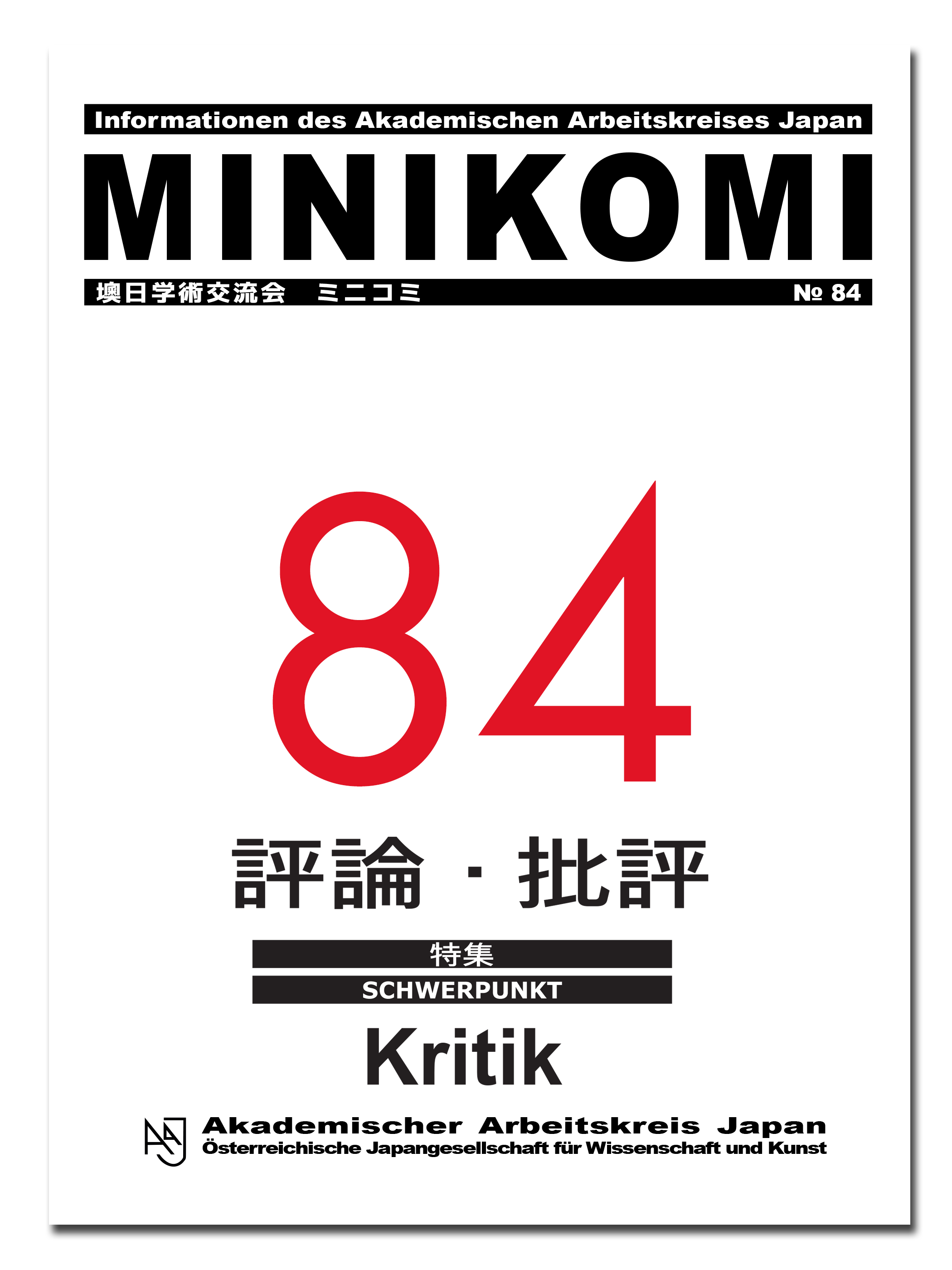Practicing Criticism
Hyōron, hihyō, kuritishizumu and the Changing Structures of Critique in Modern and Contemporary Japan
Schlagworte:
Kritik, Kritiker, Japan, hyoron, hihyoAbstract
Critical writing is hard to conceptualize. It can appear in the sphere of academic discourse, in mass media, and everywhere in between. It can be objective or polemic, theoretical or pragmatic, progressive or reactionary. These ambiguities and contradictions force us to continuously question how we—as scholars of culture and society—should and can relate to this kind of discourse.
As a starting point for this issue, we do not only aim to provide an (arguably incomplete) overview of important critical writers and works in Japan, we also want to discuss critical writing as a social practice. Thus, we argue that Japanese critical thought can be better understood by taking its socioeconomic as well as historic context into consideration. This point of view provides the ability to look for the continuities and breaks in the tradition of criticism, as well as the determining social processes (e.g. within the publishing industry). In accordance, this article will not deal with subjects in a strict chronological manner, even though it is structured roughly in that way.
Downloads
Veröffentlicht
Zitationsvorschlag
Ausgabe
Rubrik
Lizenz
Copyright (c) 2014 Peter Mühleder, Florian Purkarthofer

Dieses Werk steht unter der Lizenz Creative Commons Namensnennung 4.0 International.






